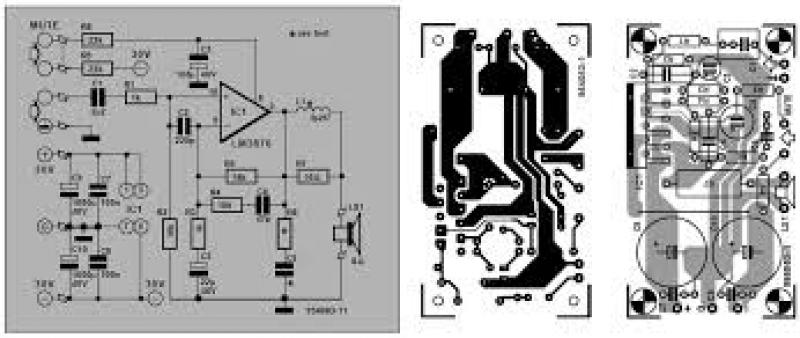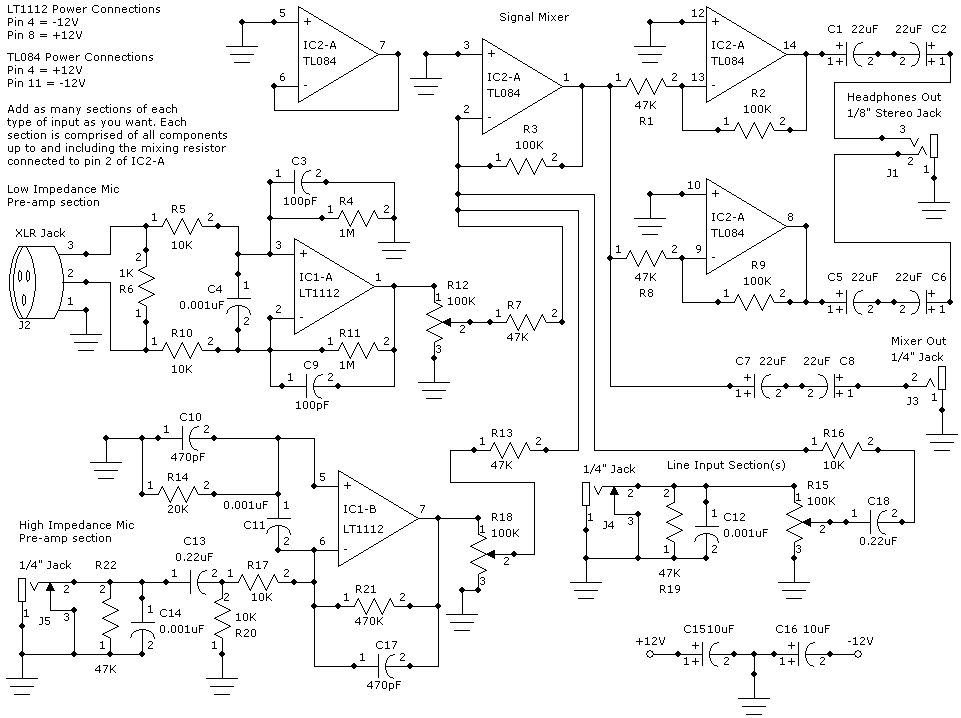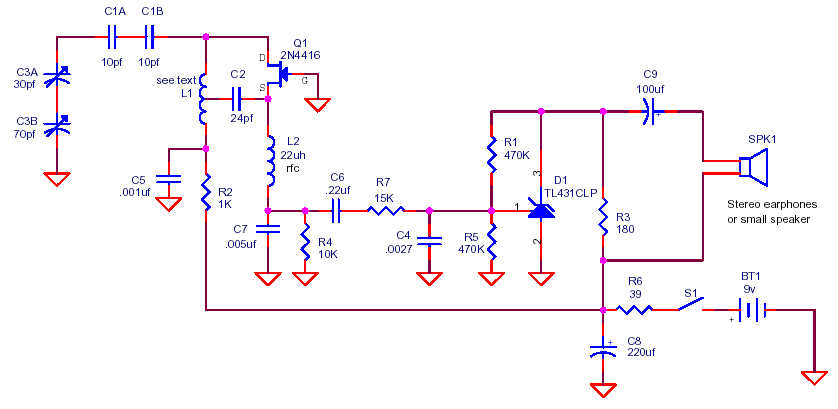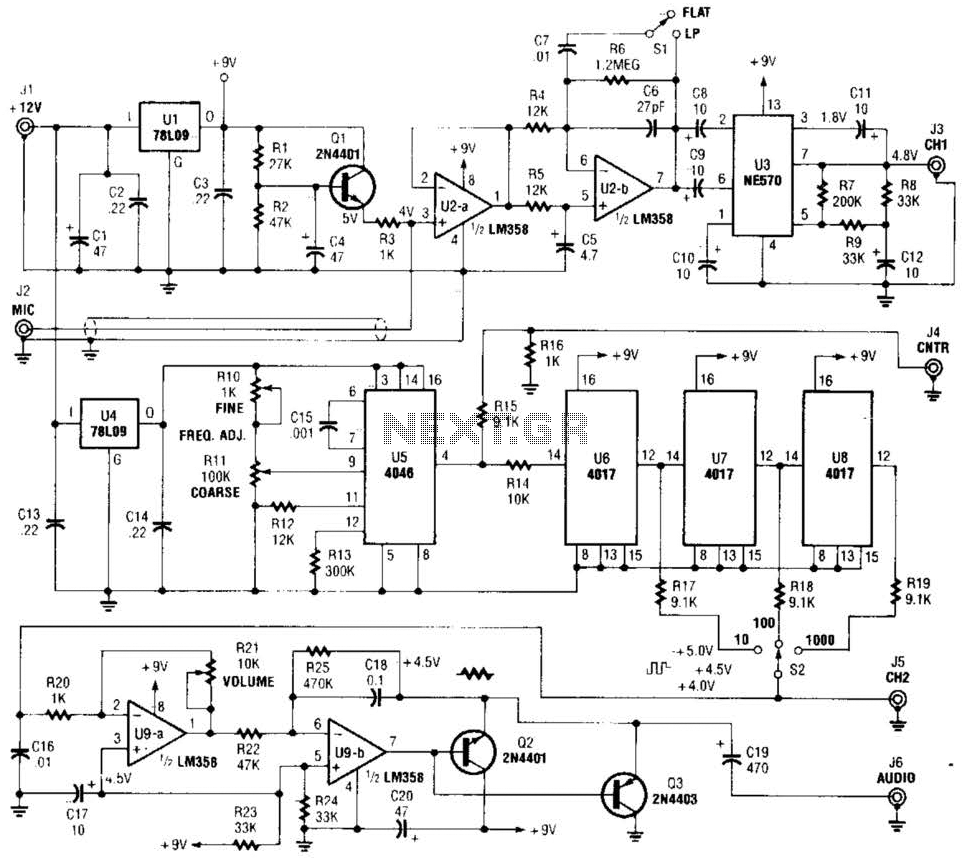
Super audio Reverb
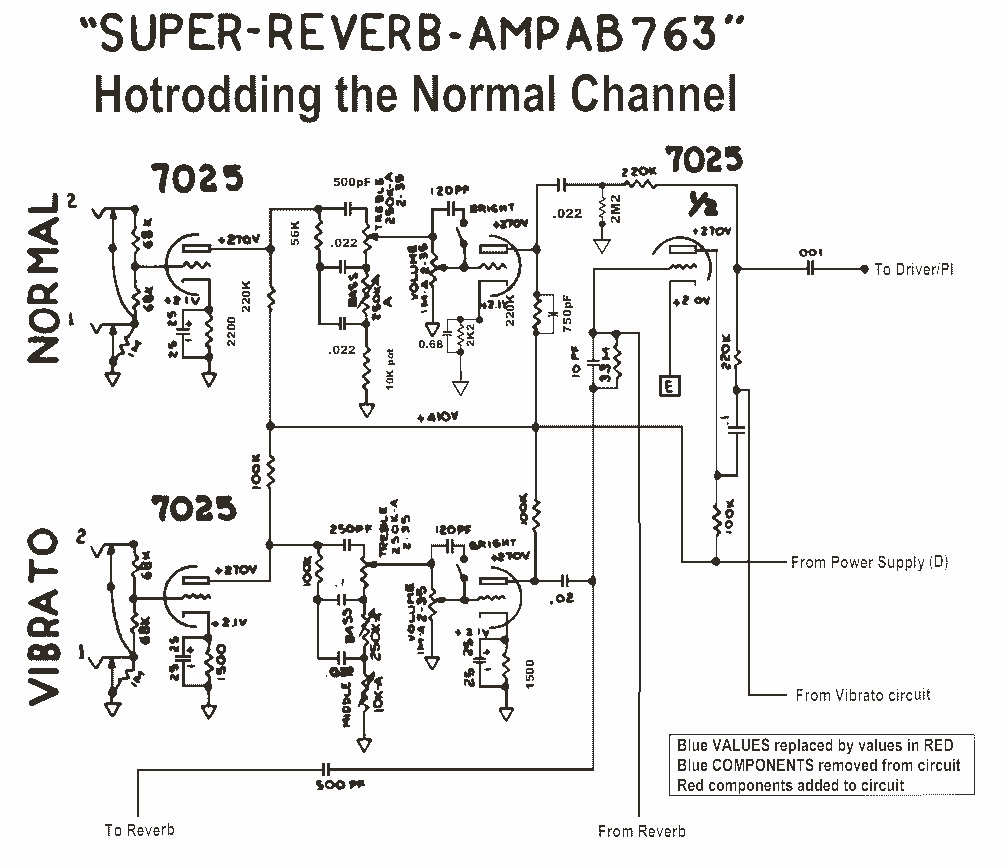
Blue VALUES replaced by values in RED. Blue COMPONENTS removed from circuit. Red components added to circuit.
In this circuit modification, the original design underwent significant changes where blue values were substituted with corresponding red values to enhance performance or compatibility. The removal of blue components indicates a strategic decision to eliminate elements that may have been outdated or inefficient, thereby streamlining the circuit's functionality. The introduction of red components signifies the incorporation of new elements that are likely to improve the circuit's overall efficiency, reliability, or operational capabilities.
The schematic should reflect these changes clearly, with all blue components removed and replaced with appropriate red components. Each component's specifications, such as resistance, capacitance, or inductance, should be accurately updated to reflect the new red values. This ensures that the circuit operates within the desired parameters and meets the intended design requirements.
For clarity, all connections must be reviewed to ensure that the new components are integrated correctly with the existing circuit layout. Careful attention should be given to the orientation of polarized components and the ratings of all new parts to prevent circuit failure. Additionally, simulation of the modified circuit is recommended to verify performance under expected operating conditions and to identify any potential issues arising from the changes made.Blue VALUES replaced by values in RED. Blue COMPONENTS removed from circuit. Red components added to circuit. 🔗 External reference
In this circuit modification, the original design underwent significant changes where blue values were substituted with corresponding red values to enhance performance or compatibility. The removal of blue components indicates a strategic decision to eliminate elements that may have been outdated or inefficient, thereby streamlining the circuit's functionality. The introduction of red components signifies the incorporation of new elements that are likely to improve the circuit's overall efficiency, reliability, or operational capabilities.
The schematic should reflect these changes clearly, with all blue components removed and replaced with appropriate red components. Each component's specifications, such as resistance, capacitance, or inductance, should be accurately updated to reflect the new red values. This ensures that the circuit operates within the desired parameters and meets the intended design requirements.
For clarity, all connections must be reviewed to ensure that the new components are integrated correctly with the existing circuit layout. Careful attention should be given to the orientation of polarized components and the ratings of all new parts to prevent circuit failure. Additionally, simulation of the modified circuit is recommended to verify performance under expected operating conditions and to identify any potential issues arising from the changes made.Blue VALUES replaced by values in RED. Blue COMPONENTS removed from circuit. Red components added to circuit. 🔗 External reference

